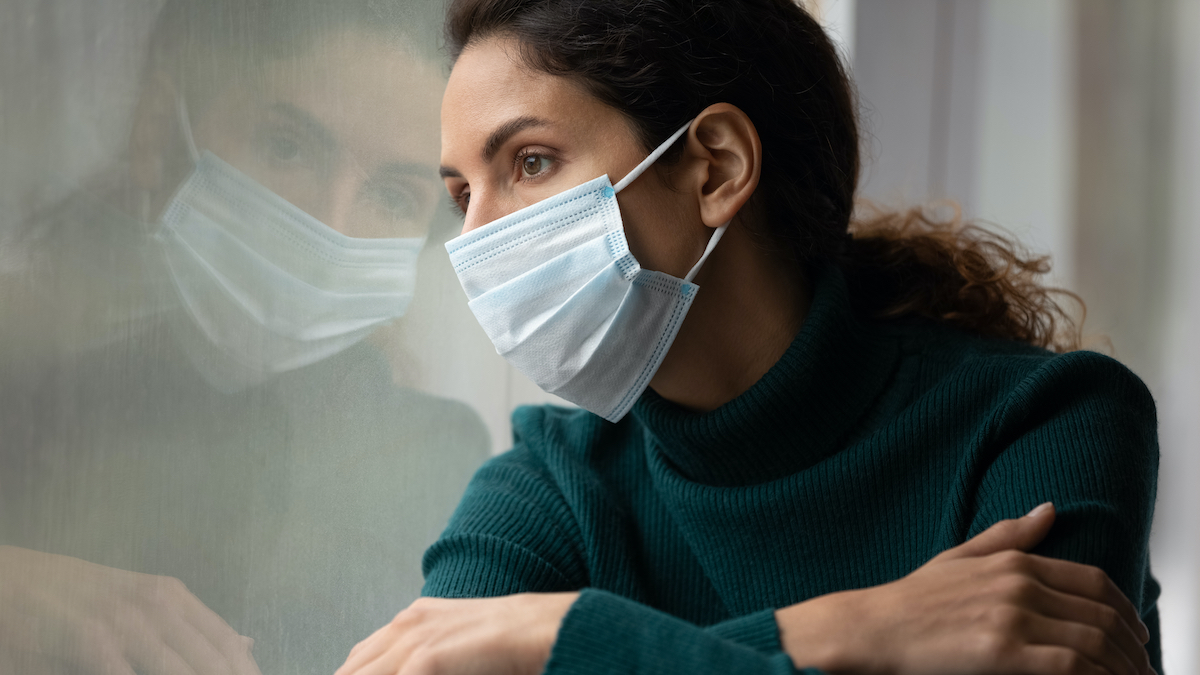By Shivani Chinnappan, SWHR Programs Coordinator
As an increasing number of Americans receive the COVID-19 vaccine, it seems like the end of the pandemic is in sight. Yet we are still far from fully understanding the virus and its long-term impact, especially for COVID-19 “long haulers,” those who continue to experience symptoms for weeks or months after recovery from acute illness.
Research suggests that anywhere from 10% to 30% of people who contract COVID-19 will experience prolonged effects. With more than 29 million reported cases in the U.S. so far, this population of long haulers will only grow in size in the months and years to come. Within this growing population, research has begun to show that women may be at higher risk for long-lasting symptoms.
While the experiences of those with long COVID, or post-COVID syndrome, appear to vary widely, the most common symptoms are fatigue, headache, difficulty breathing, and loss of smell. Some patients even report having “hallucinations, delirium, short-term memory loss, or strange vibrating sensations when they touch surfaces,” which could be an indication of alteration in the nervous system.
Surveys of these patients have clearly demonstrated the negative effects of long COVID on daily life. One survey of more than 3,700 self-described COVID long haulers in 56 countries showed that nearly half of long COVID patients had to reduce work hours due to symptoms and about 22% weren’t working at all.
It remains unclear what causes long COVID, though it can occur even in younger, healthier patients or those who had only mild illness. Some researchers suggest the condition may develop as sustained damage from the initial infection, while others believe it may be the result of an elevated immune system response even after the initial infection has passed.
Long COVID and Women
The theory that long COVID could be related to immune response may help explain reports that the condition appears to be more common in women. Research has shown women generally have a stronger immune response than men. While a strong immune response may be beneficial in initial progression of the virus, it may also render women more vulnerable to prolonged autoimmune-related symptoms afterward.
A hospital in Paris saw about 30 COVID long haulers a week from May to July 2020, with the average age of 40 and a ratio of 4:1 women to men. A study from King’s College in London found that women ages 50-60 were at highest risk for sustained COVID symptoms. Another study published in early March also identified women as more likely to become long haulers. A Mayo Clinic physician who leads post-COVID syndrome research recently said about 60% to 80% of COVID-19 long hauler patients there were women. In addition to experiencing long COVID at a higher rate, women may also face a wider range of symptoms, including menstrual health issues.
Even with increasing documentation of the adverse effects of long COVID, women may feel hesitant to talk to their health care provider due to fear of being dismissed, as some women have reported. Historically, women have often experienced dismissal of their chronic pain by providers who write them off as “overreacting” or “hysterical.” It is critical that the health care system take women and others with long-term COVID symptoms seriously.
Research on Long COVID
COVID-19 research priorities thus far in the pandemic have been mainly focused on vaccine development and mitigating the effects of initial infection. As such, research into the long-term impacts of the disease has been limited. Some sources are reporting that long COVID patients may experience alleviation of symptoms after receiving the vaccine, but clinical studies are needed to confirm this and decipher the mechanics behind this observation.
Most data being collected on long COVID are from qualitative surveys of patients reporting long-term symptoms after recovering from initial infection. These studies have been key in identifying the variety of symptoms experienced, collecting evidence on average duration, and indicating risk factors that may be associated with long COVID.
Recent announcements have been made about new research efforts to address long COVID. In December, the National Institutes of Health (NIH) held a workshop explore key gaps in our knowledge about the effects of long COVID, and the agency is beginning a new initiative that seeks to identify the causes of long COVID and to explore prevention and treatment of the condition. It is imperative that these studies consider and examine sex and gender disparities in COVID-19. Identifying possible ties to sex as a biological variable or the influence of gender may help to unlock potential solutions to this enigmatic condition.
In addition, many hospitals across the nation have set up post-COVID clinics to bring together multidisciplinary teams across several specialties to support long hauler patients. These centers will play a key role in providing a clearer image of long COVID and its impact.
Long hauler patient support groups are also a great resource for advocacy and community-building. Survivor Corps, for example, mobilizes long haulers to support research and provides information on plasma donation, COVID-19 webinars, COVID survivor clinical trials, and more. For more personal connection, patients can also find support groups where long haulers discuss their experiences, like the Long COVID Facebook Support Group.
A year into the pandemic and as more and more people are vaccinated, it’s time to put a greater focus on addressing the long-term impacts of COVID-19 infection. With proper research investment and collaborative efforts with patients, we can find ways to improve the lives of those suffering from long COVID.
